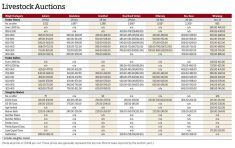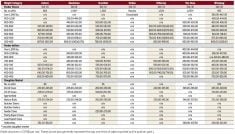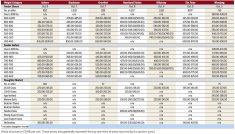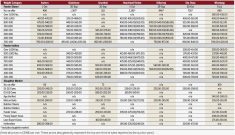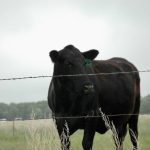Rising fuel costs, as well as last summer’s historic drought in Manitoba, have had a ripple effect on cattle auctions across the province, according to one auctioneer.
Tyler Slawinski, auctioneer at both Ashern and Gladstone auction marts, said that while the cattle market is still going strong, the spike in fuel prices are affecting the bottom line.
“You start factoring the costs of gains and the costs of transportation, in my opinion, those are the main suppressants of the cattle market today,” he said. “The freight rates have gone up and from what I heard it’s tough to jockey trucks around for whatever reason.”
Read Also
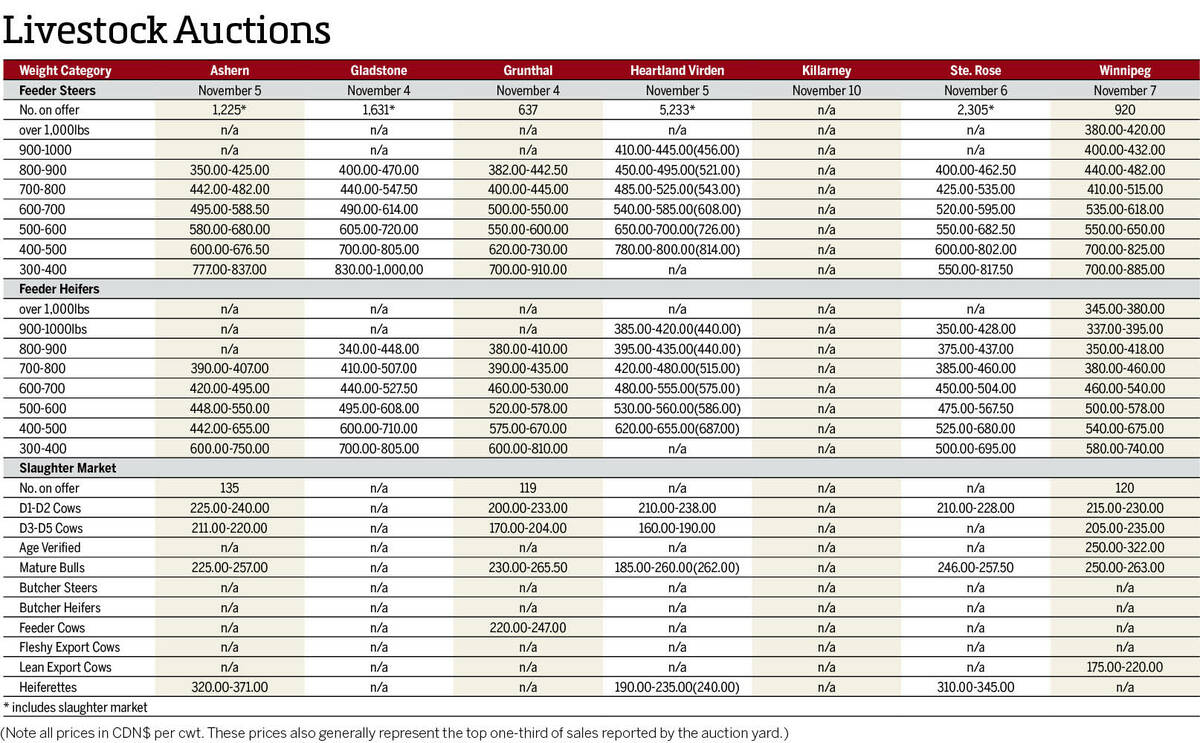
Manitoba cattle prices – Nov. 10
Cattle prices from Manitoba’s major auction marts for the week of Nov. 4-10.
Cattle numbers across Manitoba auction sites were steady compared to the previous week. In total, 7,998 animals went through the rings during the week ended March 24, slightly less than the 8,045 from the previous week.
Last summer’s drought in Manitoba forced cattle auction sites to reopen earlier in late summer. As a result, Slawinski anticipates a decline in numbers in the coming weeks.
“We’re definitely starting to see (numbers) taper off in Manitoba. That was bound to come and I would say it’s two months early because we started two months earlier with the drought being there. I think it’s starting to finally show up now,” he said. “There are rumblings of (starting to hold sales) every two weeks in a couple of weeks already, which is about a month and a half ahead of schedule.”
There was a lack of significant price movement for feeders at most auction sites during the week, although Slawinski mentioned that heifers typically “flood the market” at this time of year because buyers prefer steers early on. For example, he said, at least 86 per cent of cattle sold during Gladstone’s sale on March 22 were heifers.
“We’re seeing a few steers, but mainly second- and third-cut cattle coming to town… Guys just haven’t sold any heifers yet,” he said.
On the Chicago Mercantile Exchange (CME), the April live cattle contract closed at US$139.675 per hundredweight on March 24, only a 20-cent increase from one week earlier. Meanwhile, the April feeder cattle contract ended March 24 at US$162.725/cwt, US$2.175 higher than on March 17. The Canadian dollar gained 0.66 U.S. cent over the week to close at 79.71 U.S. cents on March 24.
Slawinski said most top-end cattle are going to Eastern Canada while a few are either moving west or south into the U.S. He believes that cattle prices will rise over the next few weeks due to declining numbers, which would offset some costs.
“I don’t think we’re going to see a huge spike… but I can’t see anything getting too crazy until fall when feed reserves can be put back into the feed yards and grass can get grown for the cattle. People are just going to assess things again and take things one step at a time.”




